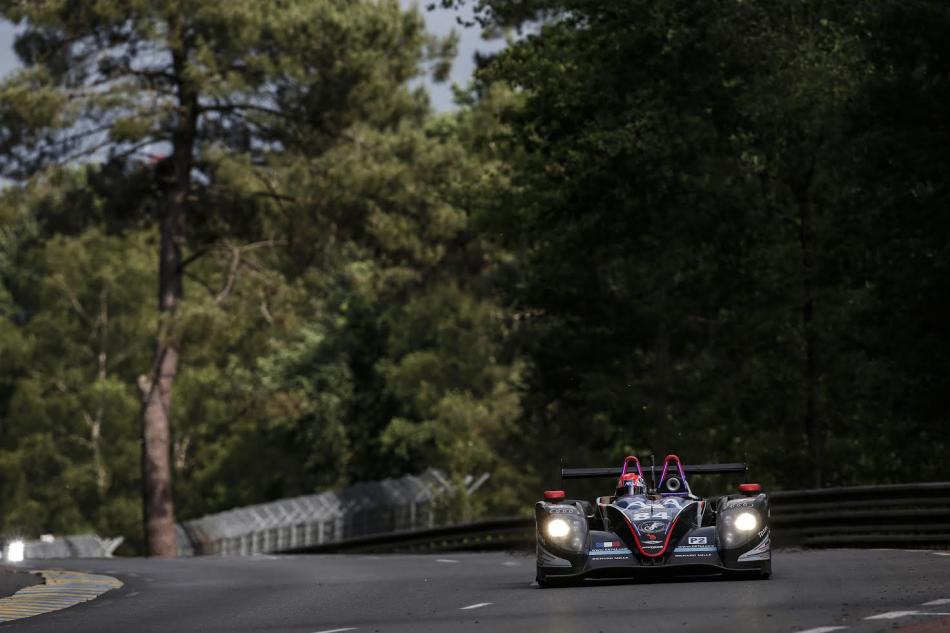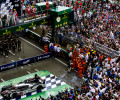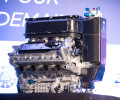Auto #16 - Feat of Endurance
Every year, the Le Mans 24 Hours celebrates innovation by allocating Garage 56 to a pioneering racing endeavour. This year it was home to one of motor sport’s most challenging efforts –Frédéric Sausset’s attempt to take on the world’s most famous endurance event despite being a quadruple amputee

July 2012 and what should have been a pleasant family holiday on France’s Atlantic coast becomes a waking nightmare as a freak accident irrevocably alters one man’s life.
“Four of us went away, only three came home,” recalls Frédérique Sausset, wife of businessman Frédéric, who while enjoying quality time with his family sustained a tiny, seemingly harmless scratch on his hand.
In a frighteningly short space of time, however, Sausset was hospitalised with a virulent bacterial infection. He rapidly fell into a coma and later awoke with his arms amputated at the forearms, and his legs cut off just above the knees, operations that been crucial to his survival.
When he eventually came out of the coma, Frédéric Sausset was engulfed in love, but in his head he was alone: alone with his thoughts and alone to choose between slipping away or fighting for another chance.
He chose the latter and in the months that followed the then 43-year-old set himself an incredible goal, to compete in the world’s most famous endurance motor sport event – the Le Mans 24 Hours.
“I had just arrived at the rehabilitation centre, near Tours,” explains Sausset. “My ‘accident’ happened at the end of July 2012. It was mid-October and I started to think that I had to find something to grab my attention, or I wouldn’t be able to deal with it. Then all of a sudden, the idea of doing the Le Mans 24 Hours came into my head.
“I never stopped working on it up to the end of December 2012: I read thousands of articles – about racing, the teams, their organisation and their work methods. I structured my project, drew up a list of partners that I’d like to have on board, people to contact. Then I thought about how a race car could be adapted to cope with my handicap. On 23rd December, I spoke to my wife Frédérique. She had never shown any sort of interest in motor sport, but she said, ‘if it’s good for you, go for it. Do it.’”
As his ambition grew, Sausset’s crazy dream became a realistic project and an extended family formed around him without which, he says, the realisation of his goal, at this year’s event, would never have happened.
RACE PREPARATION
Christophe Tinseau, a veteran of 12 Le Mans attempts, became one of the mainstays of this tribe, coaching Sausset on driving techniques. Le Mans organisers the ACO (the Automobile Club l’Ouest) backed the Frenchman to use Garage 56, the space reserved for ‘innovative projects’. And then there was the team of engineers that developed the innovations to allow Sausset to race – any of which were devised by Frédéric himself.
These included the steering wheel in the form of a connecting rod to which he would attach the screw from his artificial carbon arm, and a special seat linked to the accelerator and brake by a crosspiece that brought the pedals up to his leg stumps. There was also a compressed air system to lift his seat so that Sausset could get himself out of the car.
“My handicap forced me to think, to come up with solutions,” he says. “I can’t bear coming up against a problem I can’t solve. Basically, I’m stubborn. And in fact, nothing could be simpler than the things I ‘invented’ like extensions for the pedals. I didn’t know if it would work, but it seemed the simplest solution to come up with; the ‘ejector seat’ so that I could get out of the car in an emergency, the connecting rod instead of a steering wheel. The engineers, technicians and mechanics on my crew did everything they could to refine my suggestions and to put my ideas into practice.”
And there were more, as David Lecleach, data and systems engineer at one of Sausset’s partners, Onroak Automotive, explained to lemans.org earlier this year. “We are the only car to have ABS, which is a massive help when it comes to braking. There is a Master-Vac brake booster that creates a vacuum to provide assistance when the driver presses the pedal. Without it, he wouldn’t apply enough pressure to brake himself.
“The steering wheel is unique,” he added. “The prosthesis he wears has a tip at the end that he uses to turn the wheel. It has practically the same steering rotation as a standard wheel. It has all the buttons required to start and stop the engine, and to control the automatic gearbox and the power supply. For him to use them, he must be disconnected from the steering wheel so all the buttons have been designed for use only when the car is stationary.
“There is a paddle that he can control with his right thigh. It is used to control the pit limit [the speed permitted when coming into the pits] and the full course yellow at 80kph. He presses it down as long as necessary and the computer interprets that to adjust the engine strategy [throttle opening and engine management]. Finally, on his left, there is a joystick that controls the indicators and activates the brake lights and flashers.”
The FIA, too, was involved, validating the car as competition ready for the world’s most famous endurance race. The initial reaction though was cautious, a position Sausset understands.
“The authorities [had to approve] – the ACO and the FIA. If Vincent Beaumesnil [Sporting Director of the ACO] or Pierre Fillon [ACO President] had vetoed it immediately, that would have been
the end. I went to see them in April 2013 at which time I had not even tried to drive a road car. I only retook my driving test that July.
“FIA President Jean Todt could not give his approval from the start. Safety is at the top of his agenda. I came from nowhere, I had never raced and on top of that I have this handicap. But he followed the development of the project closely and over the past few months we had quite a few meetings. He came to see me in the pits at the 24 Hours. And he sent me a wonderful letter the day after the event.”
The road to Le Mans itself was long, however, and saw Sausset build up to it via driving tests in a Ligier JS 53 EVO CN, prepared by Onroak, and then in the VdeV championship.
“It was another victory, the first time I got in the CN prototype at the little Magny-Cours circuit in March 2015,” Sausset says. “My main problem is that I never savour the present, because I’m always looking to the next step.”
And eventually Sausset was ready to realise the goal – racing at Le Mans in a prototype Morgan LMP2 car alongside team-mate drivers Tinseau and Jean-Bernard Bouvet.
“Fred doesn’t just settle for driving. On track, he thinks, analyses, anticipates. As he did more races, I saw him become a competitor like any other,” says Tinseau. And the result, for Sausset, was as magical as he had always imagined. “The night-time was fabulous! Your field of vision decreases, you arrive at Arnage and notice the bonfires burning in the spectator areas and you can sniff the smell of Merguez sausages cooking,” he smiles.
“Then, on the way back to the pit straight, you see the big wheel lit up and you can hear the concert. Magic! I will remember that all my life, as I will the howling Ferraris. I was behind one of them down the Hunaudières and I could no longer hear my own engine, just the Ferrari’s…”
LOOKING TO THE FUTURE
There was, though, the inevitable – the finish line. It was a moment Sausset had not prepared for.
“On Sunday, at daybreak. I knew it would soon be over,” he says. “During the last hour, before my final stint, I couldn’t stop crying. For the past two years, I’d imagined what it would be like to cross the finish line. In fact, I cried before. But when the flag was waved in front of me, I was already looking to the future.”
And it’s a future he is working on with the same commitment shown in tackling Le Mans.
“Afterwards, I got back to work as soon as possible, getting on with running my business and I also began to organise my motor sport future,” he says. “It was too thrilling an experience to stop there. I’m currently looking at various options, but I’d rather wait until they come to fruition before talking about them.
“I feel I owe a debt to motor sport, which accepted me as I am and allowed me to go through with this challenge,” Sausset concludes. “I wanted to do everything when it came to the Le Mans project, to control everything from A to Z: looking for technical partners and sponsors, building relations with corporations, with the constructors; the dialogue with the engineers, organising the local agencies. I was risking exhaustion, but it was vital for me to understand everything. I wouldn’t want to be seen as pretentious by saying that I can bring something to motor sport today, but I do believe that I can.”
Click here to read Auto #16 Magazine online.

 Facebook
Facebook Twitter
Twitter






